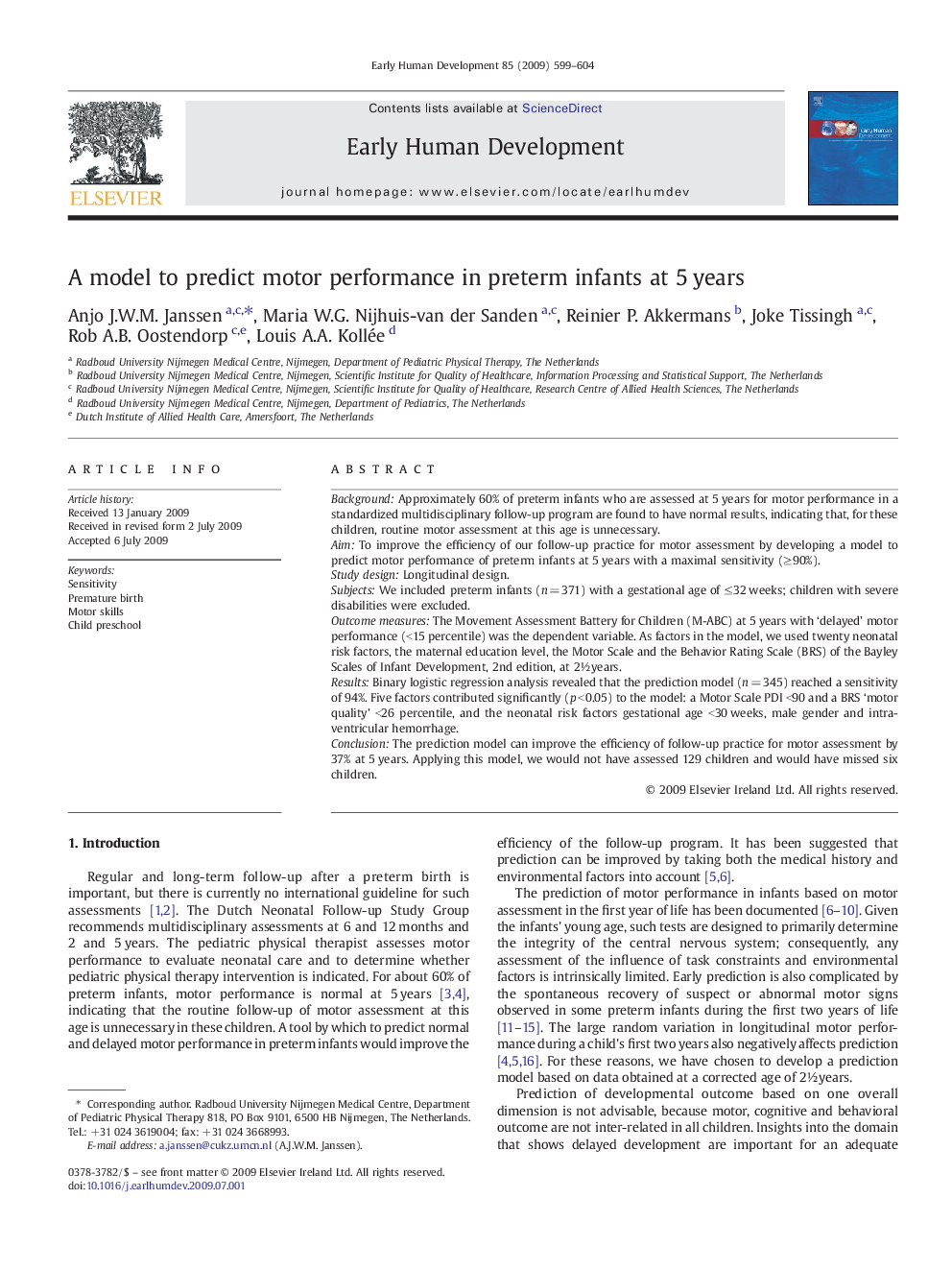| Article ID | Journal | Published Year | Pages | File Type |
|---|---|---|---|---|
| 3918544 | Early Human Development | 2009 | 6 Pages |
BackgroundApproximately 60% of preterm infants who are assessed at 5 years for motor performance in a standardized multidisciplinary follow-up program are found to have normal results, indicating that, for these children, routine motor assessment at this age is unnecessary.AimTo improve the efficiency of our follow-up practice for motor assessment by developing a model to predict motor performance of preterm infants at 5 years with a maximal sensitivity (≥90%).Study designLongitudinal design.SubjectsWe included preterm infants (n = 371) with a gestational age of ≤32 weeks; children with severe disabilities were excluded.Outcome measuresThe Movement Assessment Battery for Children (M-ABC) at 5 years with ‘delayed’ motor performance (<15 percentile) was the dependent variable. As factors in the model, we used twenty neonatal risk factors, the maternal education level, the Motor Scale and the Behavior Rating Scale (BRS) of the Bayley Scales of Infant Development, 2nd edition, at 2½ years.ResultsBinary logistic regression analysis revealed that the prediction model (n = 345) reached a sensitivity of 94%. Five factors contributed significantly (p < 0.05) to the model: a Motor Scale PDI <90 and a BRS ‘motor quality’ <26 percentile, and the neonatal risk factors gestational age <30 weeks, male gender and intra-ventricular hemorrhage.ConclusionThe prediction model can improve the efficiency of follow-up practice for motor assessment by 37% at 5 years. Applying this model, we would not have assessed 129 children and would have missed six children.
